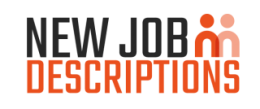
The healthcare industry is vast and complex, covering various aspects such as technology, communication, and customer service. Among these crucial components, healthcare call center metrics and staff training play a significant role in maintaining the overall quality of services provided. In this article, we’ll explore the connection between the two in healthcare and how optimizing this link contributes to better performance and customer satisfaction.
Essential Components of Healthcare Call Center Metrics
An efficient call center is the backbone of effective communication within any healthcare organization. By leveraging important healthcare call center metrics, organizations can optimize service delivery and enhance the patient experience. Key metrics include:
- First Call Resolution: This measures how well call center agents can address callers’ needs within a single interaction. Staff training helps enhance customer service skills, ensuring that agents can provide comprehensive support without escalating concerns.
- Average Handle Time (AHT): AHT gauges the time taken to complete a call, considering factors like talk time, hold time, and after-call work. Meanwhile, intensive staff training helps increase the efficiency of agents, resulting in a reduced AHT.
- Abandoned Call Rate: This refers to the percentage of callers who hang up before the call is answered. By keeping agents motivated and well-trained on policies, healthcare organizations can lower their abandoned call rate and improve overall satisfaction.
- Agent Occupancy Rate: This metric determines the portion of time agents spend handling calls against their total available work shift. Ongoing training enables agents to improve their proficiency, thereby increasing productivity.
To successfully track and monitor these healthcare call center metrics, an organization must implement proper systems and focus on employee training.
The Impact of Staff Training on Call Center Performance
Training directly influences call center performance, as it equips agents with the skills and knowledge required to handle various call situations. By providing staff with regular training programs, healthcare organizations can ensure high-quality service and an enhanced patient experience. Some key benefits of staff training include:
- Increased First Call Resolution: Comprehensive training empowers agents to take appropriate action and provide accurate information during the first call, reducing unresolved concerns.
- Improved Quality Assurance Scores: As staff becomes more knowledgeable, they can address customer concerns more effectively, leading to better quality assurance (QA) scores.
- Reduced Employee Turnover: Regular training opportunities boost employee satisfaction and morale, resulting in a lower turnover rate.
- Enhanced Customer Satisfaction: Employees equipped with advanced skills can better manage their callers’ needs, offering a more satisfying experience overall.
Creating an Effective Call Center Training Program
A well-structured training program can yield considerable results in the call center environment. To develop such a program, healthcare organizations should:
- Assess current staff performance levels and identify areas for improvement.
- Define clear objectives and goals for the training program.
- Implement varied training methods, such as workshops, coaching, and e-learning courses.
- Regularly evaluate the training program’s effectiveness and make adjustments as needed.
- Invest in strategies to manage call center stress and overload, such as mindfulness techniques and stress management training.
Conclusion
Running a healthcare call center is a complex and demanding task. However, by keeping a close eye on important healthcare call center metrics and investing in comprehensive staff training programs, organizations can optimize performance, reduce stress, and ensure better service delivery to their patients. To learn more about managing healthcare call center stress and overload, you may also check out this blog post. By continuously improving the connection between call center metrics and staff training, healthcare organizations can enhance their overall performance and patient satisfaction levels.


























